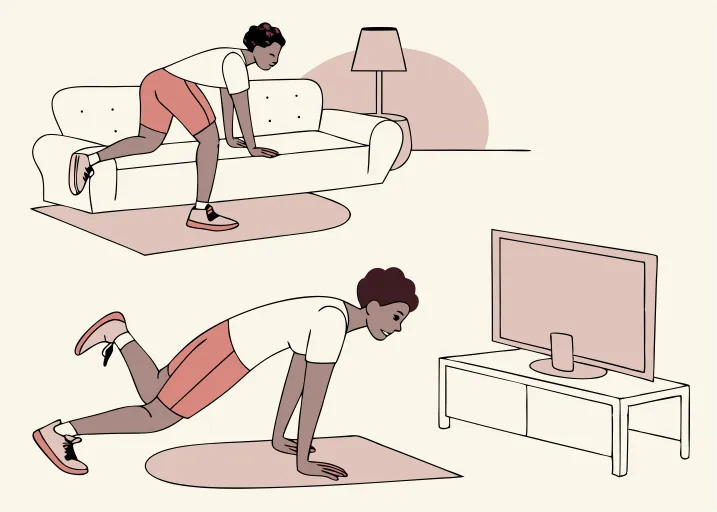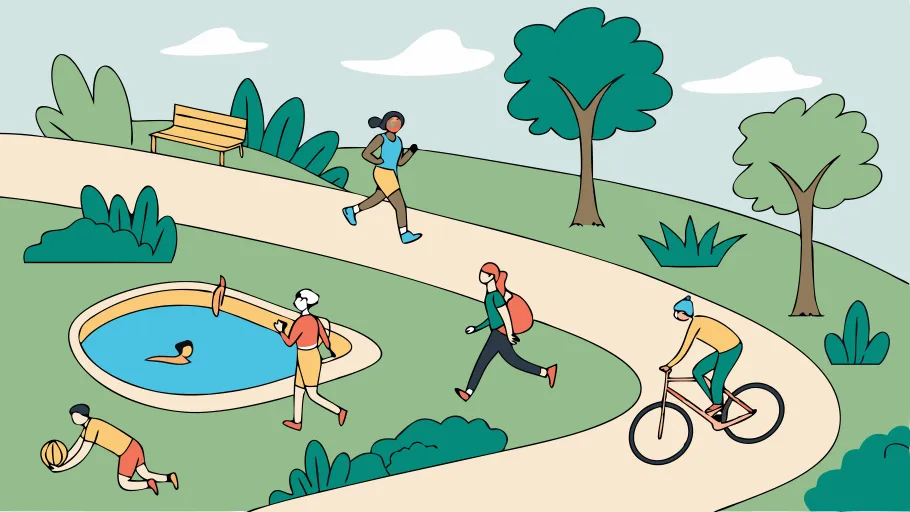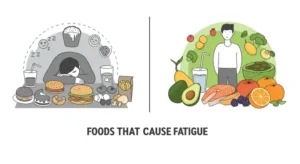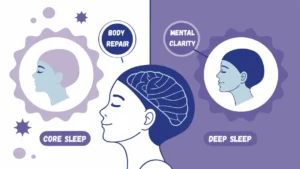Are you tired of feeling winded after climbing a few stairs or needing frequent breaks during activities with your family? You’re not alone. Many people want to boost their stamina but don’t enjoy running or can’t run due to joint issues. The good news? You can build impressive endurance without ever lacing up running shoes.
This guide will show you proven ways to improve stamina without running through fun exercises, smart nutrition choices, and simple lifestyle changes that work together to boost your energy levels.
7 Effective Ways to Build Stamina Without Running
1. Swimming: Your Full-Body Stamina Builder
Swimming tops the list for building endurance while being gentle on your joints. This water-based workout strengthens your heart and improves lung capacity – two key elements for better stamina. You can enhance your swim endurance and stamina with proper technique and training.
Getting started with swimming:
- Begin with basic strokes like freestyle or backstroke
- Start with 10-15 minute sessions and slowly increase time
- Focus on steady breathing to get the most oxygen
- Try interval training by alternating between fast and slow swimming

2. Cycling: Indoor or Outdoor Options
Whether you prefer indoor cycling or outdoor rides, both offer excellent cardiovascular benefits. Regular cycling strengthens your heart, lowers your resting pulse, and reduces blood fat levels.
Cycling benefits:
- Burns 300-500 calories per hour depending on intensity
- Strengthens lower body muscles
- Improves heart health with low joint impact
- Offers flexibility with indoor or outdoor options
3. High-Intensity Interval Training (HIIT)
HIIT combines short bursts of intense activity with brief rest periods. This method builds stamina quickly and can boost your metabolism for hours after your workout.
Sample HIIT workout:
- Burpees: 30 seconds work, 30 seconds rest
- Jumping jacks: 30 seconds work, 30 seconds rest
- Mountain climbers: 30 seconds work, 30 seconds rest
- Repeat 3-4 times with 1-2 minute breaks between rounds
4. Bodyweight Circuits
These exercises use your own body weight to build both strength and stamina. They’re perfect because you can do them anywhere, anytime.
Creating your circuit:
- Choose 4-6 exercises targeting different muscle groups
- Do each exercise for 45-60 seconds
- Rest 15-30 seconds between exercises
- Complete 3-4 rounds with 2-minute breaks
Essential exercises to include:
- Squats for lower body strength
- Push-ups for upper body and core
- Lunges for balance and unilateral strength
- Planks for core endurance

5. Rowing: The Ultimate Full-Body Workout
Rowing machines work 86% of your body’s muscles with every stroke. This exercise strengthens your legs, core, back, and arms while providing excellent heart benefits.
Proper rowing technique:
- Start with your legs, then engage your core and back
- Pull with your arms last
- Focus on smooth, controlled movements
- Keep good posture throughout
6. Dance Fitness: Fun While Building Endurance
Dancing provides amazing cardiovascular benefits while being one of the most enjoyable forms of exercise. Research shows dance can burn as many calories as traditional aerobic exercises.
Popular dance styles to try:
- Zumba combines Latin rhythms with aerobic movements
- Hip-hop fitness incorporates urban dance with cardio
- Dance classes offer structured workouts with social benefits
- At-home dance videos provide convenience and variety
7. Brisk Walking: The Accessible Option
Don’t underestimate the power of a good walk. Brisk walking effectively builds stamina, burns calories, and strengthens your heart without requiring special equipment.
Maximizing your walking workout:
- Aim for about 3 miles per hour – fast enough that you can talk but not sing
- Add hills or inclines to increase intensity
- Use interval training by alternating between brisk and moderate paces
- Gradually increase duration and intensity over time
Body Energy Nutrition: Fueling Your Stamina
What you eat plays a huge role in your energy levels and stamina. The right body energy nutrition approach involves three key components:
Complex Carbohydrates: Your Primary Energy Source
Complex carbs provide steady energy release without causing blood sugar spikes. Unlike simple carbs that cause energy crashes, these nutrient-dense options keep you energized longer.
Best sources include:
- Oats: Rich in fiber and provide sustained energy
- Brown rice: Offers complex carbs with essential nutrients
- Quinoa: Complete protein and complex carbohydrates combined
Lean Protein: For Muscle Repair and Growth
Protein helps your muscles recover by providing amino acids that repair tissue damaged during exercise. Post-workout protein consumption stimulates muscle protein synthesis.
Excellent protein sources:
- Chicken and fish: High-quality complete proteins
- Beans and lentils: Plant-based proteins with fiber
- Eggs and dairy: Versatile complete protein sources
Healthy Fats: For Sustained Energy
Healthy fats provide long-lasting energy and support hormone production and nutrient absorption. These fats help maintain steady energy levels and keep you feeling full.
Top healthy fat sources:
- Avocado: Rich in monounsaturated fats and fiber
- Nuts: Almonds, walnuts, and cashews provide healthy fats and protein
- Seeds: Flax, chia, and pumpkin seeds offer omega-3s and fiber

Timing Your Nutrition for Better Results
Pre-Workout Nutrition
Eat a meal rich in carbohydrates and moderate in protein 1-3 hours before exercise. This timing improves energy availability and reduces muscle breakdown during your workout.
Post-Workout Recovery
Focus on replenishing energy stores and supporting muscle recovery. Consuming protein immediately after exercise enhances recovery and prepares your body for the next workout.
The Power of Hydration
The benefits of hydration for energy cannot be overstated. Water plays a direct role in energy levels by supporting nutrient and oxygen delivery to your cells. When dehydrated, your heart works harder, leaving you feeling tired.
Hydration strategies:
- Calculate daily needs: divide body weight in pounds by two for ounces needed
- Monitor urine color as a hydration indicator
- Drink consistently throughout the day rather than large amounts at once
Lifestyle Factors That Boost Stamina
The Critical Role of Sleep
Sleep is essential for muscle recovery and energy restoration. Your body releases human growth hormone during deep sleep phases, which helps repair muscle tissue and replenish energy stores. Quality sleep also helps prevent fatigue that can hinder your stamina-building efforts.
The Importance of Rest Days
Rest days allow your muscles to rebuild stronger after exercise. Without proper rest, you risk overtraining, which can lead to fatigue and poor performance. Understanding inflammation and fatigue can help you recognize when your body needs recovery time.
Building Consistent Habits
Consistency matters more than intensity when building lasting stamina improvements. Treat exercise as non-negotiable appointments and find times that work for your schedule.
Motivation strategies:
- Set micro goals: Break large fitness goals into smaller, achievable milestones
- Find enjoyable activities: Choose exercises you genuinely enjoy
- Celebrate small wins: Recognize progress to maintain motivation
- Track your workouts to see tangible progress
- Vary your routine to prevent boredom
Additional Tips for Success
Building stamina is a journey that requires patience and consistency. Consider these factors that might be affecting your energy levels:
- Avoid foods that cause fatigue
- Implement high energy morning routines to start your day right
- Address potential causes of low energy that might be holding you back
- Take advantage of natural electrolytes for energy to support your workouts
Start Your Stamina Journey Today
Improving your stamina without running is not only possible but can be incredibly rewarding. From swimming and cycling to dance fitness and bodyweight circuits, you have numerous options to find what works best for your body and preferences.
Remember that a proper diet to improve stamina forms the foundation of your journey. Fuel your body with complex carbohydrates, lean proteins, and healthy fats while staying properly hydrated. Don’t forget that recovery aspects like quality sleep and rest days are just as important as your active training sessions.
Start today by choosing one or two exercises from this guide that appeal to you most. Begin with manageable sessions, focus on proper form, and gradually increase intensity as your fitness improves. With consistency and patience, you’ll build the stamina you’ve always wanted – no running required.
Your journey to better stamina starts with a single step. Take that step today, and your future self will thank you for it.








